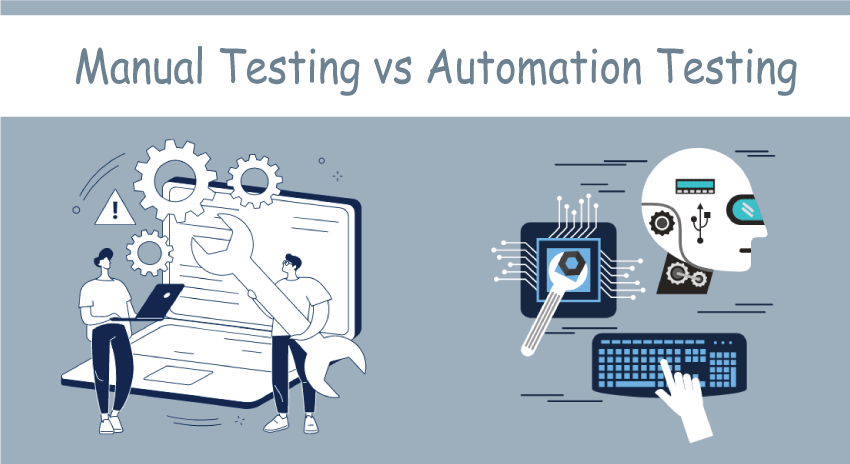Difference Between Manual and Automation TestingManual and automation testing are two ways to do software testing that is commonly utilized in the industry. The best strategy to take relies on several variables, including the project's needs, budget, timetable, and available resources. Each technique has advantages and disadvantages of its own. 
Definition of Manual Testing:Manual testing is manually running test cases and comparing the outcomes to the desired behavior. It entails a human tester thoroughly examining and assessing the software's behavior to identify potential issues. Manual testing can be done in multiple ways, including exploratory, functional, usability, and regression. Exploratory testing includes a tester exploring the functionality and behavior of the product to find any potential problems or bugs. Functional testing includes ensuring that the program meets its operational requirements. Usability testing includes analyzing the program's user interface to determine how simple and intuitive it is to use. Regression testing comprises testing the program again after modifications are done to ensure no new issues have been added. Manual testing suits small-scale projects with constrained efforts and well-defined testing scope. Testers may use intuition, expertise, and knowledge during manual testing to spot problems that automated testing technologies could miss. The validity of non-functional criteria like usability, accessibility, & security may also be accomplished by manual testing. Yet, manual testing may be costly, time-consuming, and prone to mistakes. The test cases are carried out by human testers, which might result in subjectivity and inconsistency during the testing process. Also, manual testing necessitates a lot of paperwork and reporting, which may be laborious and time-consuming. Definition of Automation Testing:Automation testing is the process of executing test cases and verifying the outcomes using automated tools and scripts. Automation testing aims to cut down on the time and labor needed to complete repetitive or complex testing jobs. Automated testing is better suited for large-scale projects with extensive and time-consuming testing. It is commonly used in regression, load, and performance testing. In automation testing, test cases are created as scripts that are executed by automated technologies to check the outcomes. Automated testing is more efficient and economical than manual testing because it can produce test data, imitate user behavior, and run tests concurrently. Automated testing is also used to test complicated situations that are hard or impossible to test manually. For example, load testing might simulate thousands of users accessing the program simultaneously to test its scalability and performance. Regression testing may be automated to ensure the program functions as intended after modifications have been made. But, automated testing has limitations. For some testers, it might be challenging to get started because it involves knowledge of scripting & test automation technologies. Due to the need for specific gear and tools, automation testing can be costly to set up and maintain. According to the information above, the following are some of the main differences between manual testing and automation testing:
ConclusionIn conclusion, manual and automation testing have benefits and drawbacks; each strategy is more effective for particular tasks. While automation testing is more effective and appropriate for large-scale projects, manual testing is more adaptable and ideal for smaller projects. The best quality, timeliness, and affordability outcomes may be obtained by combining manual and automation testing. The choice of testing strategy will ultimately rely on several variables, including the project's scope, budget, timetable, and resources available.
Next TopicDifference Between
|
 For Videos Join Our Youtube Channel: Join Now
For Videos Join Our Youtube Channel: Join Now
Feedback
- Send your Feedback to [email protected]
Help Others, Please Share










